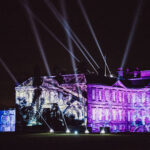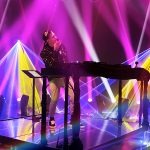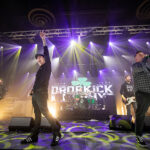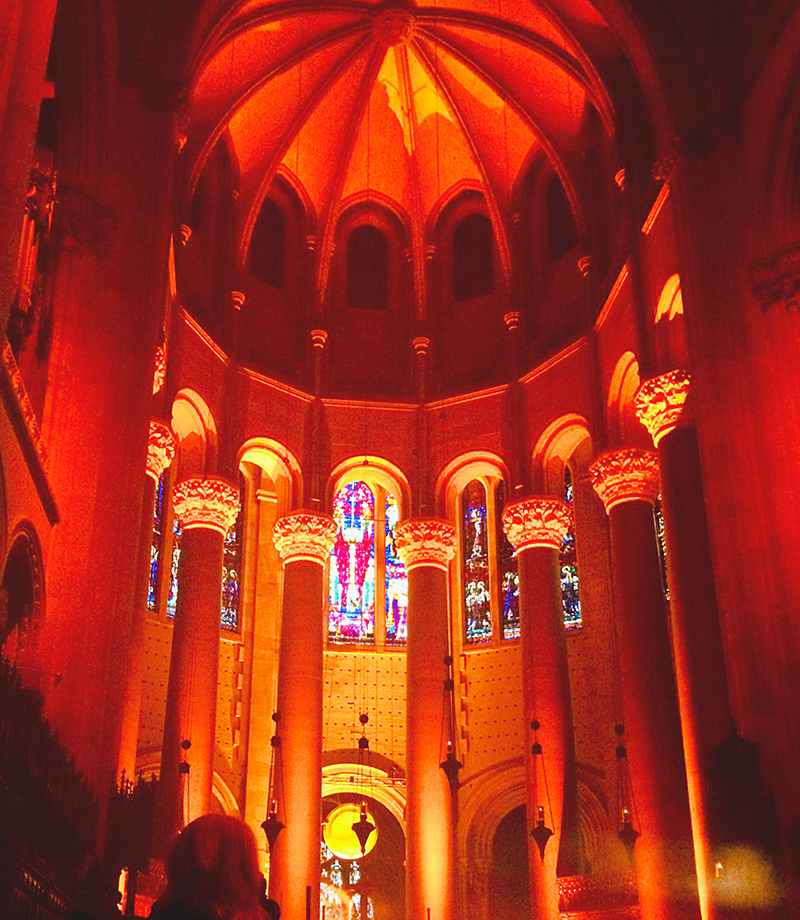
In December 2019, the Paul Winter Consort, led by Grammy-winning soprano saxophonist Paul Winter, celebrated the 40th Anniversary of the group’s annual Winter Solstice Celebration. The shows, which ran from Dec. 19-21, were staged at St. John the Divine Cathedral in Upper Manhattan’s Morningside Heights neighborhood.
The nondenominational event, which The New York Times once dubbed a “New Age answer” to Radio City Music Hall’s Christmas Spectacular, is global in its outreach and scope. “In a city like New York, which can be a quite lonely place, to have a forum where you can feel like you are part of a village of people is precious,” Winter tells PLSN.
A shifting cast of characters have participated in the Solstice celebration over the last four decades, and 2019 brought a mix of familiar faces and recent additions, including vocalist Theresa Thomason, cellist Eugene Friesen, woodwind player Paul McCandless, Clark Goering on euphonium, the Forces of Nature Dance Theatre, and special guest Noel Paul Stookey, of Peter, Paul and Mary fame, who produced the Consort’s first two records, The Winter Consort and Something in the Wind, in the late 1960s.
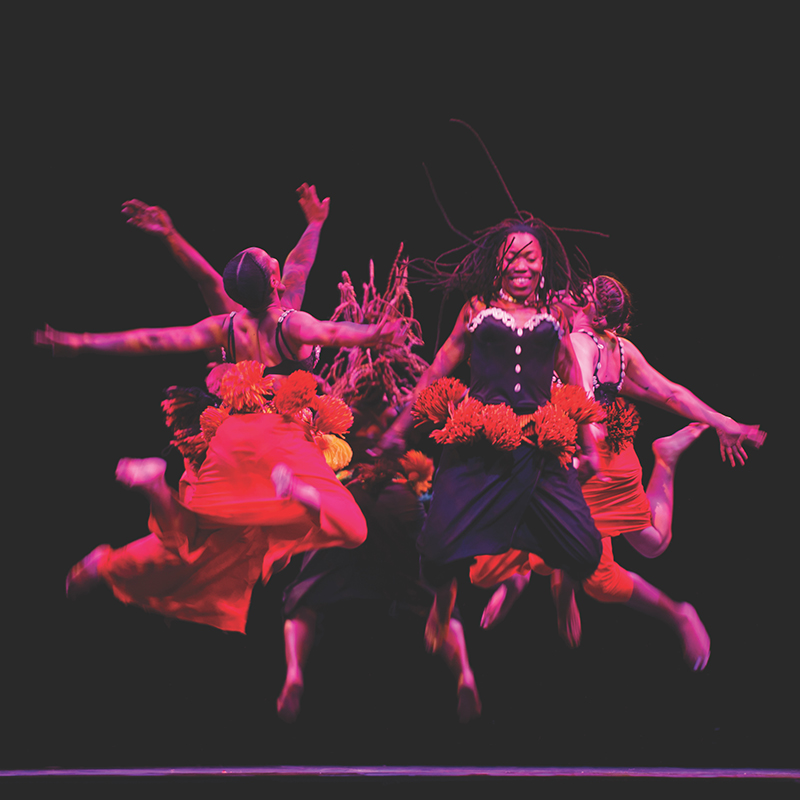
Canyon Cathedral
Construction of the Cathedral of St. John the Divine, still unfinished, began in 1892, and while it’s only two-thirds complete, it ranks among the largest cathedrals in the world. The sheer size and scope of the Neo Gothic marvel can be inspiring, daunting or both to a designer, presenting not just a unique opportunity for visuals, but for sound quality as well. Winter visited the cathedral only once prior to 1980, the year he became an artist-in-residence. It was 1974, while attending Duke Ellington’s funeral, and Winter’s imagination was set ablaze. “Instrumentalists love spaces that enhance the sound of our instruments to give it a kind of bouquet of resonance,” Winter says. “It makes the sound linger longer and, maybe, more magical.”
Winter was, and is, a trailblazer in harmonizing with the sounds of nature and combining ethnic music of the Eastern and Western Hemispheres with classical and jazz forms. For his 1985 album release, Canyon, Winter had recorded at various locations around the Grand Canyon, over a span of five years. At the Solstice concert PLSN attended, Winter explained that the echo delay time of St. John Divine is similar to that of Arizona’s multi-sedimentary and stratified gorge. “You go to the Grand Canyon, and your sense of wonder is awakened,” says Winter. “That’s what can happen in this cathedral, and the lighting is a huge part of it.”
The cathedral’s cavernous expanse and detailed architecture provides a contoured canvas for production manager and lighting designer Steve Shelley. A good deal of the action does not occur on the main stage. For starters, Winter opens the Solstice Celebration by playing solo in the balcony in the west end of the cathedral, near the Great Rose Window. To address this, Shelley’s lighting plot is layered and varied, with a mix of conventional lighting and more modern fixtures to cover all aspects of the performance.
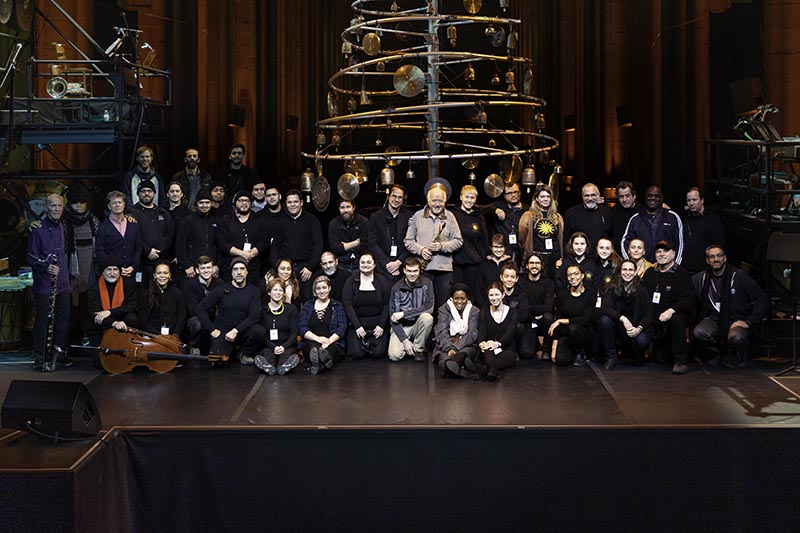
“The stages are in the center of the cathedral,” says Winter. “Half of the audience is on the east and half is on the west [side of the church]. There are musicians who play at different places, different times, and then we all converge on the stage at various places.”
A combination of 450 house and rental lighting units are positioned in four major areas: the Narthex, or entrance under the Rose Window, which is populated with ETC Source Four Par narrow spots fitted with R22 deep amber gel; the North and South catwalks; directly above, behind, on the sides of, as well as the cross arch over the high altar. Lastly, a four-sided lighting rig made from 20-by-20-inch box trusses situated above the stage was hoisted into place via chain motors and loaded with fixtures from top to bottom (along with side-arms and goal posts).
Prior to the Solstice performances, PLSN was on hand to witness some of the prep work in a buzzing and very active church where Shelley and his associate, lighting programmer Melissa Mizell, were cutting gels.
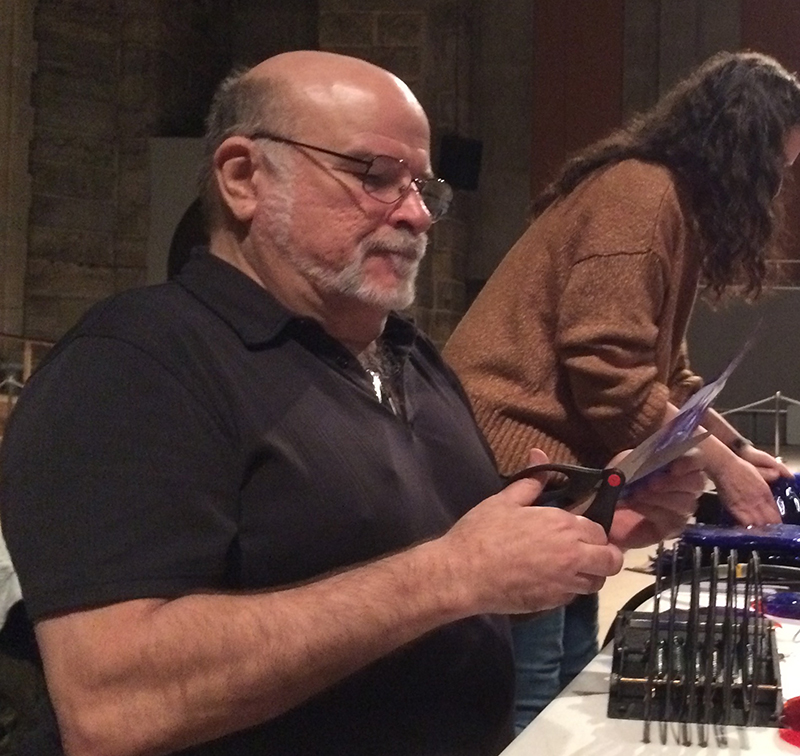
While juggling his duties for the Solstice performances, Shelley was also prepping for a revival of Patrick Stewart’s one-man show, A Christmas Carol, at Theater 511. But while that one-man charity gig was high in profile, the sheer number of performers involved in the Solstice celebrations made Winter’s concerts more challenging in terms of overall coordination and synchronization. Ethnic dancers, jazz musicians on risers, a giant Earth Ball, the ascension of the Sun gong and the appearance of the 25-foot spiral tree decked out with gongs and bells made the Solstice celebration more like a series of shows wrapped inside a single event.
“More often than not as a lighting designer I am helping to direct where the audience needs to look, where the leads are,” says Shelley. “Usually there are sequences when people are dancing, and we let that be a tableau look. But when the chorus of dancers move to the sides and then a solo, duet, trio, a group of four are dancing around center, we will use the truss spots to help pick them out. In this way, because they’re mounted on the north and south side, they act as additional sidelight to help cutout the shape and provide plasticity, so that the dancers bodies don’t look like they pasted against the black background. The addition to all of this, this year and last, is live streaming.”
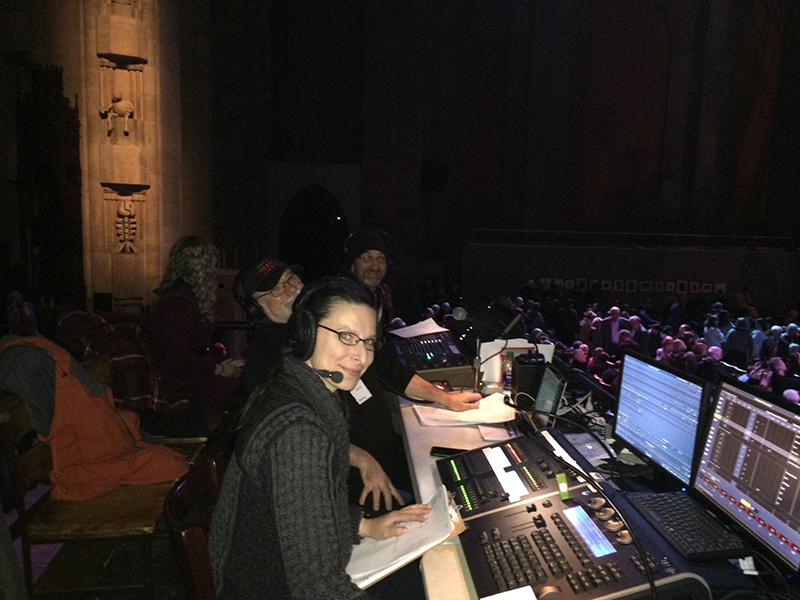
Here Comes the Sun Gong
For 2019, the Consort musicians performed on Dec. 21, the actual Winter Solstice date, which is the longest night of the year for those in the northern hemisphere, inspiring traditional observances from many cultures that have been passed down for centuries. “It was important to light candles and build fires at the time of the Winter Solstice and to beseech the sun and honor it,” says Winter. “We are revisiting this ancient tradition, and it’s from that tradition that Christmas evolved.”
Winter’s Solstice show had become a new tradition for many trips around the sun, but after 26 years, the sax man decided that the musical festivities needed to be accompanied by more visual radiance. In 1989, Winter and his creative people had brainstormed on the concept of introducing a symbol of the sun, and “we came up with the idea of a huge gong,” says Winter.
At the performance PLSN witnessed, the attendees were mesmerized by the raising of the gong between the columns and western stained-glass windows near the ambulatories and chapels, located in the semicircular French-style apse.
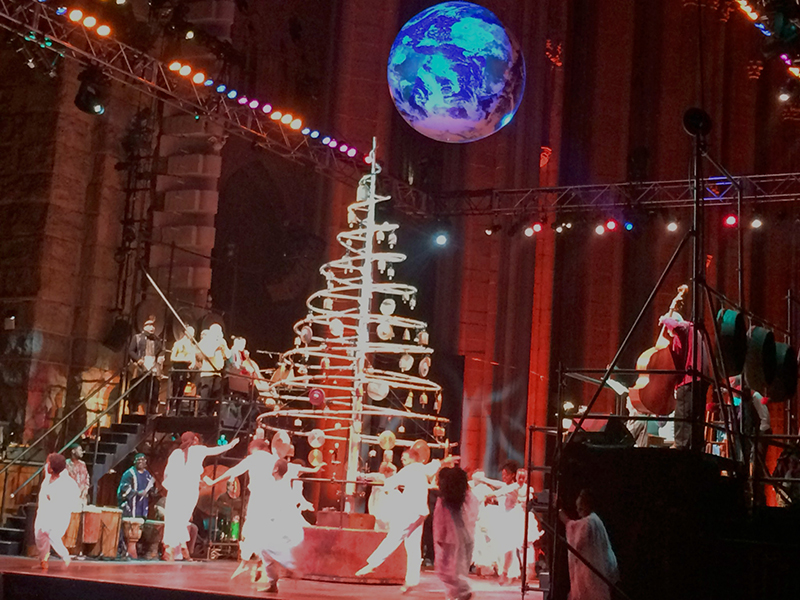
Just prior to this, excitement built to a crescendo as the Consort played the final notes of the epic, “Journey Through the Longest Night,” signaling the completion of Act One. (The show is split by an intermission) In near-total darkness, a spot-lit Winter and euphonium player Clark Goering marching up steps toward the high altar in the east.
“We use two overhead followspots, and that crosses over to two movers on the east side of the truss, following them up the aisle,” says Shelley. “About three-quarters of the way up the center aisle in the great choir, we kill the fog and let it dissipate.”
The gong, rigged to trussing hoisted via chain motors, begins its ascent and is lit with Lycian 1271 spot. Gong-ist Matt Guyton sits in a bosun’s chair and is elevated 70 feet in the air, toward the vaulted ceiling, as he strikes the eight-foot-diameter disc.
“When the song crosses over acoustically to the organ, doing a huge bass solo, we have a 5K that is mounted on a tripod underneath the gong, and it turns on as the gong gets raised,” says Shelley. “The East deck followspot is moved into the center aisle and goes through a series of color changes. It starts in saturated red, with a Rosco 26, and progresses through a color fade all the way up to R O2. We have a series of cues that light the columns progressively on either side symmetrically. It’s a 25-cue sequence that slowly builds from the altar all the way back to the narthex.”
“The place is immersed in a huge sunrise,” says Winter. “When the gong reaches the top, all the musicians are back on stage, and we play a final piece, called ‘Solstice Chant.’ The lighting that Steve has created is transformative.”

Finale
The “Earth Ball” is another visual attraction, which accompanies “Silent Night” in the second half of the show. “We found a big balloon that’s painted with the continents that comes through the cathedral on a moving stage — actually an old cast-iron railway baggage cart that we found in a salvage yard in New Jersey for ten dollars,” Winter says. “The Earth ball is hooked to a cable in full view of the people and it starts ascending and turning. That’s when people begin to realize how amazingly high that cathedral is. It’s 125 feet in the nave [center aisle]. When it is somewhat dark in the cathedral, you can’t even see the ceiling. It does feel, in a way, like you’re in a big canyon.”
“Auld Lang Syne” closes the show, and the entire cast congregates on stage around the spiral gong and bell tree. The show ends, the audience files out, and PLSN hits the streets of New York City in early evening — warmed by the glow of the Consort’s performance inside the grand cathedral. Clearly, the “light within” had been ignited.
Back at the cathedral, there was still much work to be done, however: Winter and cast had one more show to present, closing 2019’s run. Later, Shelley told me that “clean up” for the final show wasn’t completed until 6:26 Sunday morning — when the City that Never Sleeps is a bit groggy.
Summer Solstice
Winter Solstice has been observed, but on June 20, 2020, the Consort will be celebrating its counterpart — the Summer Solstice — for an event that is itself nearing its 25th anniversary. “It begins at 4:30 in the morning in total darkness and continues with musicians around the cathedral playing soloes, duets and ensemble pieces until the first rays of the sun [come into the cathedral, marking] the longest day of the year,” says Winter. “There is no light show on earth that can be as powerful as the sunrise.”
